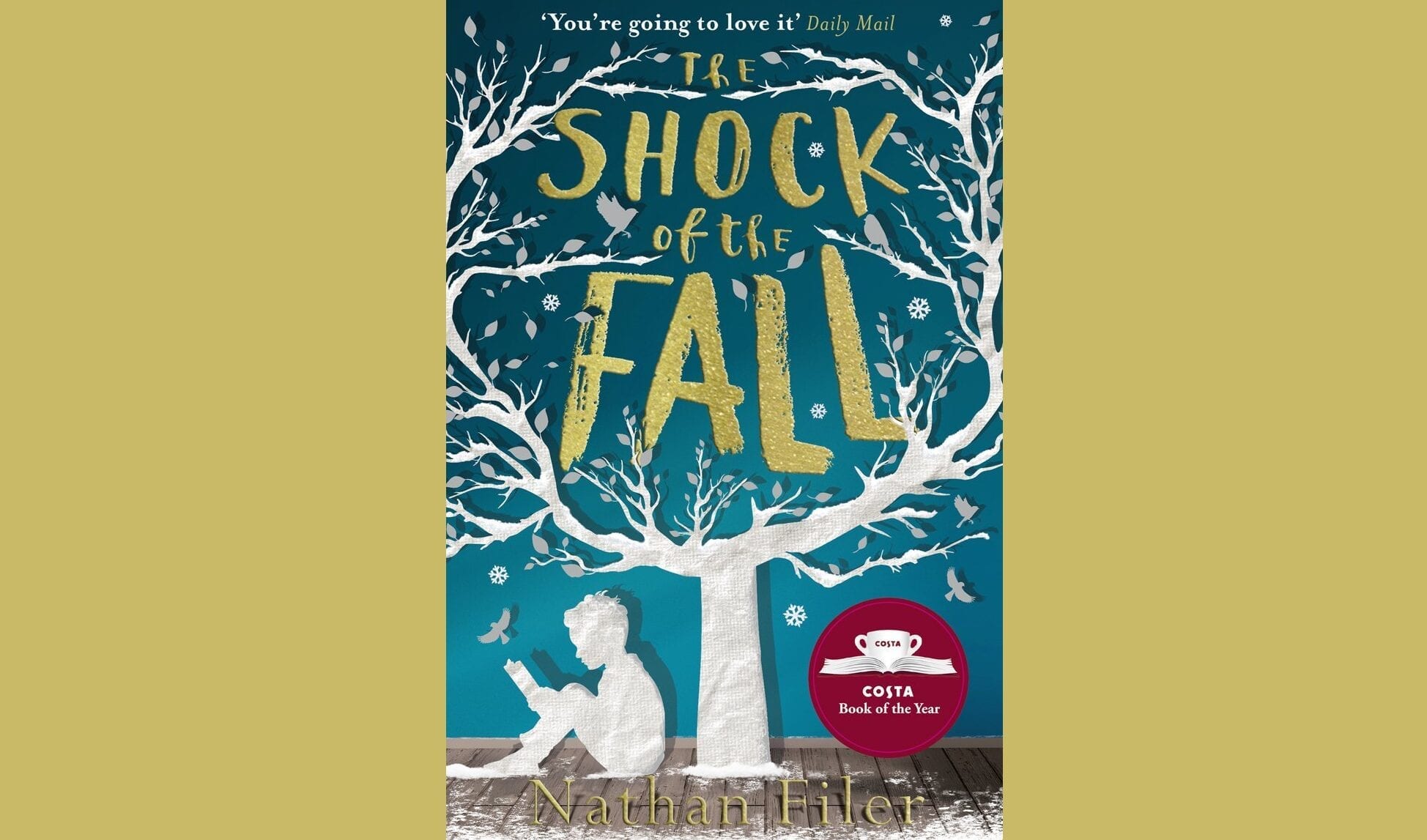SCHIZOPHRENIA n. a severe mental disorder categorised by a disintegration in the process of thinking, of contact with reality, and of emotional responsiveness. Etymology: From the Greek Skhizein (‘to split’) and Phren (‘mind’).
Nathan Filer is a mental health nurse. His 2013 debut novel The Shock of the Fall gives an insight into the mind of someone suffering from schizophrenia, using 19 year old Matthew Homes, the narrator and protagonist of this story, to illustrate the deterioration of mental health. In this instance, the death of his older brother Simon, who had Downs syndrome, is the point when Matthew’s life becomes alien, unbearable, especially when up to ten years later Matthew still believes he was to blame; in truth, we find out towards the end of the novel that Simon’s death was the result of a horrifically cruel accident, after which “this dismissive and uncaring universe simply carried on with its business.”
The story begins on the day of Simon’s death. The first half of the novel switches between childhood memories, laced in innocence but tainted by hindsight, and Matthew’s life ten years later, where he is finishing the story on a computer in the psychiatric day centre he is sectioned to – sometimes he writes on his typewriter at home, when he is permitted to return. These two points in his life juxtapose in an intriguing way, until a point is reached in the novel where childhood entwines with reality: in this case, the reality of mental illness. It is here when the reader can begin to understand Matthew’s state of mind.
It’s common knowledge that mental illness is not staring out the window as raindrops fall, and it’s not folk songs and (500) Days of Summer; life-threatening thoughts won’t disappear with drinking a cup of tea and looking at inspirational quotations on artsy backgrounds. No. What Filer does is highlight the selfishness, the isolation, the jagged perceptions and the marriage of fantasy and reality, alongside the inability to separate the two – especially when Simon lives in the hallucinations of fantasy but is no longer alive in reality.
Matthew mentions a science lesson back in school when he is taught that we are all made of atoms. These atoms are shared with the stars and other people, whether they are dead or alive. Matthew’s illness, which “has a work ethic,” makes him believe that with the right atoms Simon can be brought back. A huge part of the story centres round the fact that Matthew can see Simon, in the schizophrenic images his mind creates and in everything else – at one point, Simon is in the candle flames on Matthew’s 18th birthday cake. Even when sectioned, Matthew purposely acts like he is getting better, avoiding taking pills and having ordinary conversations, so he can still see his brother without being a cause for concern.
In terms of Filer’s writing style, perceptions about the unreliable narrator are removed when there is an entire chapter in which Matthew tells the reader that we must trust him. This is also shown by acknowledging that it is not the world around Matthew that is the subject of this book: Filer writes primarily about mental health, alongside the way in which grief can consume a family, and the presentation of this is enough to listen to Matthew’s story without doubting his experiences.
Having said that, there are a few things in the novel we must infer. Filer hints at how mental illness can sometimes be hereditary; in a version of a family tree called a genogram, which helps the doctors see “which branches bear the rotten fruit,” it is noted that Matthew’s grandmother on his mother’s side has a brother called Ernest who also suffers from schizophrenia. It is also documented throughout that Matthew’s mother is “mad.” But because Matthew never writes that this could be a major factor in his illness, it is never brought to light. Another thing is the decline of the NHS, which is explicitly talked about between the nurses and doctors at the day centre but is not something Matthew goes on to develop. From one nurse criticising “this bloody government” to the closure of the day centre at the end of the novel, it is clear that this is an issue Filer is concerned about. This novel alone is a perfect example of how the cuts to mental health services are appalling.
The Shock of the Fall is truly a wonderful novel. There are clear links with Mark Haddon’s The Curious Incident of the Dog in the Night-Time and J D Salinger’s The Catcher in the Rye by the way in which the reader can become completely absorbed in the train of thought of a character, however flawed their state of mind makes their perception of reality. The story is heart-wrenching at times, lovely at other times, and ends in an optimistic way without it being sickeningly saccharine. It is definitely worth a read.
Words by Caitlin O’Connor
